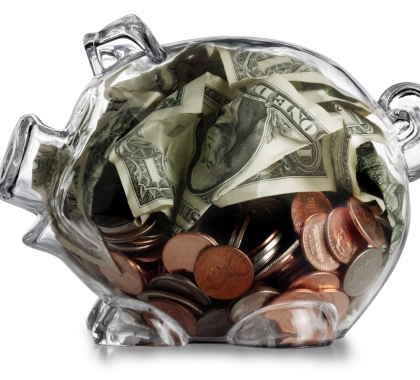The Municipal Energy Agency of Nebraska’s (MEAN) Power Supply, Risk Oversight and Finance Committees met recently to review MEAN’s financial policies and guidelines, including its cash reserve policy and guidelines.
Like many other public power utilities, including NMPP Energy's own members, MEAN has policies and guidelines it follows to establish financial targets, including its cash reserve, in order to maintain strong financial health. These financial policies and guidelines are approved by the MEAN Board of Directors and periodically reviewed. Let’s take a high-level look at what a utility’s cash reserve is and why it’s important for a utility to maintain a healthy level of cash reserve.
A utility’s cash reserve are funds set aside that enable the utility to meet the financial requirements of large, unexpected events and help ensure timely completion of capital-related utility projects. In simple terms, a utility’s cash reserve serves as a rainy-day fund. According to Utility Financial Solutions, LLC, a typical utility’s cash reserve serves four primary purposes:
- Ensure timely payment of bills;
- Maintain short and long-term financial health of the utility;
- Maintain stable rates; and
- Fund unexpected costs
Let’s drill down into each of these purposes:
Timely payment of bills
A utility requires an adequate level of cash liquidity to be able to fund normal business activities, such as purchasing energy to serve the needs of MEAN participants.
Maintaining short and long-term financial health
Cash reserves are essential for contracting for generating resources, participating in wholesale electricity markets, and debt strategy. MEAN operates with Board-approved minimum financial targets for its cash reserves which consist of its operating and rate stabilization funds.
Maintaining stable rates
Part of a utility’s cash reserve can be used to stabilize rates by allowing the utility to smooth out the impact of significant costs that can negatively impact rates.
Fund unexpected costs
A utility’s cash reserve can also be used to mitigate unexpected costs such as from a weather event or an unplanned power plant outage. Like homeowners having an emergency fund, utilities maintain a minimum level of cash reserve to cover unexpected costs when they occur. Having the cash reserve gives the utility the financial flexibility to stagger rate adjustments needed to cover the cost impact of the event.
Finding the appropriate cash reserve level
When determining an appropriate minimum cash reserve level, a utility must weigh a variety of risk factors such as variability in power costs, rate setting policies, debt policies, future capital improvement projects and the overall financial risk facing the utility. Typically, utilities set minimum cash reserve targets while knowing the overall balance will fluctuate above the minimum target. If the cash reserve balance dips below the minimum, immediate corrective action should be taken to restore the utility to strong financial health.
A healthy cash reserve is important to bond rating agencies
A utility’s cash reserve balance sends a significant signal to bond rating agencies – either positively or negatively. A healthy cash reserve signals to rating agencies the utility is able to cover debt payments even if other operating costs increase or revenues fall below targets. Being viewed positively by bond rating agencies allows for the issuance and refinancing of debt at lower interest rates, which also reduces overall costs.
For help with cash reserve planning for your municipal utility, contact NMPP's utility rate services at (800) 234-2595.

